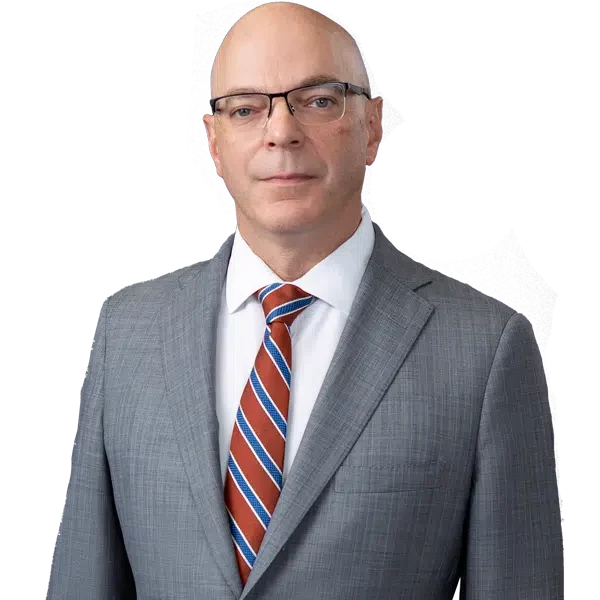
Robert P. Greenspoon
Partner
Dunlap Bennett & Ludwig
Robert Greenspoon is a Partner at Dunlap Bennett & Ludwig. He is a registered patent attorney who concentrates his practice in the litigation, trial, and appeal of patent and other complex cases. Rare among lawyers, his practice spans every aspect of the patent field. Robert works with inventors to file new patent applications, defends those inventions in all types of Patent Office proceedings (including PTAB challenges), tries patent cases in the courts, argues for appellants and appellees in patent appeals at the United States Court of Appeals for the Federal Circuit, and brings and defends patent proceedings at the United States Supreme Court.
Robert also manages the patent prosecution team at DBL. He drafts and prosecutes patents, while overseeing global patenting strategy, for clients such as the Massachusetts Institute of Technology, 3-D printing startup Impossible Objects, seasonal decorations company Holiday Bright Lights, healthcare technology company Peerbridge Health, and many others.

Recent Articles by Robert P. Greenspoon
Senators Leahy and Tillis have proposed another patent law amendment for the Endless Frontiers Act (SA 2060). No defense or damages limitation has ever turned on the niceties of recordation of ownership at the USPTO. This would be a sea change in patent law. Something so radical at least should rise or fall based on thorough and thoughtful legislative debate, investigation and committee work, including testimony by experts in real estate law and patent practice.
Senators Coons and Tillis and a group of Representatives recently proposed an admirable piece of legislation to amend the Patent Act to abrogate Supreme Court Section 101 cases on patent eligible subject matter. I like that they propose a fix to Section 101. So far, so good. Alice was an interpretation of Mayo, which was an interpretation of Flook, which was an interpretation of Benson, which was supposed to be an interpretation of what Congress meant by the short and crisp statement of Section 101 of the Patent Act. But just as a photocopy of a photocopy of a photocopy gets more distorted with each generation, so did Supreme Court rulings. The judicially-invented residue left behind not only errs by failing to capture the plain and unambiguous scope of Section 101 and patent-eligible subject matter, but also catastrophically undermines and invalidates important patents that, until then, protected breakthrough inventions. Congress is right to step in. Inventors of breakthroughs need protections to form companies and create new jobs. What the senators propose is not perfect, but at least as far as Section 101 is concerned, will restore fairness to many future outcomes.But there’s an extra bit. To call it alarming would be an understatement. That extra bit would sharply and sweepingly limit the property rights of all technology patents. The proposal (as currently drafted) amends Section 112 to require any patent claim limitation that names any function “without the recital of a structure, material or act in support thereof” to be interpreted as limited to the structural embodiment in the patent specification that practices that function (plus equivalents).

![[IPWatchdog Logo]](https://ipwatchdog.com/wp-content/themes/IPWatchdog%20-%202023/assets/images/temp/logo-small@2x.png)
